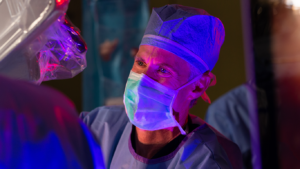It has long been recognized that some people develop symptoms of depression during the fall and winter months compared to other seasons. This condition, known as Seasonal Affective Disorder (SAD), is characterized by feelings of depression, loneliness, social isolation, fatigue, excessive sleepiness and weight gain. It affects three million persons in the U.S. and can occur at any age. Even in Arizona, where sunshine is abundant, residents can be affected by this disorder.
With winter upon us, learning how to be happy often involves incorporating healthy habits and minor alterations to our daily routines, which can be the turning point between experiencing feelings of hopelessness and achieving a sense of happiness. Depending on the severity of symptoms, there are various treatment programs available to help. Some of these treatments are simple and affordable, requiring no medications, while others are more comprehensive, involving medications and regular sessions with a psychologist or psychiatrist.
Treatments for Mild to Moderate SAD
Practice Good Sleep Habits. Good sleep hygiene is key when preventing SAD. Going to sleep and waking at roughly the same time of day helps your body maintain its natural rhythms. Avoiding stimulants, such as caffeine and nicotine, for several hours before bedtime can aid in falling asleep quickly. Limiting sources of blue light, such as computer and TV screens, for at least two hours before bedtime can also be beneficial. Although it’s tempting to think that the sedative effects of alcohol would be helpful in falling asleep, decreasing blood alcohol levels during the night disturb the natural cycles of sleep and lead to less restful sleep for the body.
Stay Active. Taking outdoor walks in the winter can be helpful even when it’s overcast or dreary outside. Regular aerobic exercise, any type of cardiovascular conditioning, is also helpful for this condition and overall health.
Maintain Good Indoor Lighting. Ensuring adequate brightness of indoor lighting helps to maintain a positive mood in persons susceptible to Seasonal Affective Disorder.
Try Light Therapy. Light therapy takes two forms, dawn simulation and intensive light therapy, which can be highly effective in preventing and treating SAD.
• The dawn simulation involves the use of a low-level (250 lux) light that is timed to come on a half-hour before planned wakeup time. The eye can sense even such low levels of light through closed eyelids while a person is still asleep and will mimic the onset of dawn, triggering the body to begin its natural wakeup cycle.
• Intensive light therapy uses a high-intensity fluorescent light (10,000 lux) for a variable time period (at least a half-hour) soon after awakening. Commercial light therapy boxes are available and anyone contemplating their use should follow instructions and precautions carefully.
Treatments for Moderate to Severe Seasonal Affective Disorder
In many cases, the use of antidepressant medication can help people maintain a positive mental outlook and improve their daily function. The role of the neurotransmitter serotonin has been a promising area of research in SAD and the use of serotonin-enhancing medications has been advocated as a treatment of this condition. Medication treatment and monitoring of benefits and potential side effects should be made after careful evaluation and discussion with one’s medical practitioner.
For those in whom all the previously mentioned treatments have been unsuccessful, psychotherapy is often recommended. Discussing your symptoms with a medical practitioner who can provide more information or recommend a psychotherapist could help you successfully treat seasonal depression.
Lane Tassin, M.D., is the chief medical officer for FastMed FastMed Urgent Care owns and operates 109 clinics in North Carolina, Arizona and Texas, providing a broad range of acute/episodic and preventive healthcare services 365 days per year. FastMed also provides workers’ comp services at all of its clinics, and family and sports medicine services at select locations. FastMed has successfully treated more than 5.3 million patients since the opening of its first clinic in 2005, and is the largest urgent care operator to be awarded the Joint Commission Gold Seal of Approval® for accreditation in healthcare quality and safety in ambulatory healthcare. For more information about locations, services, hours of operation, insurance and prices, visit www.FastMed.com.




